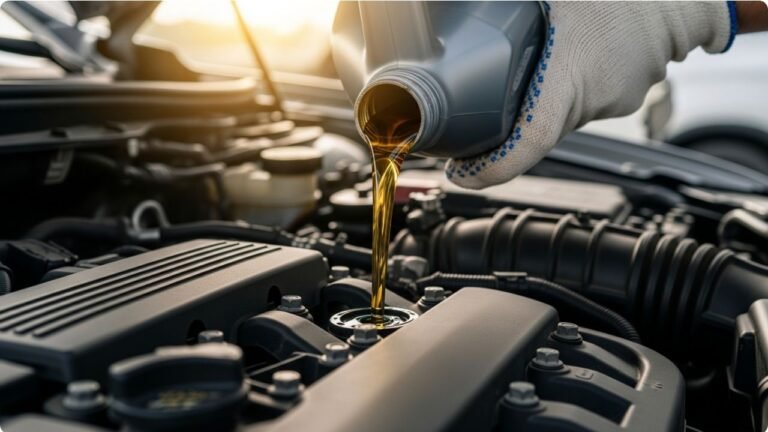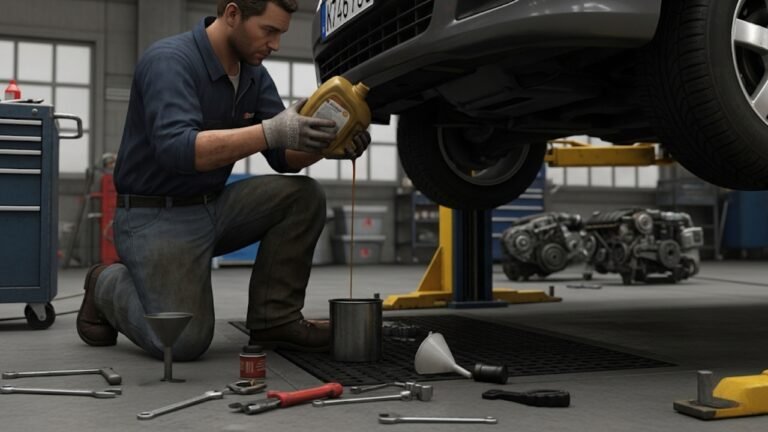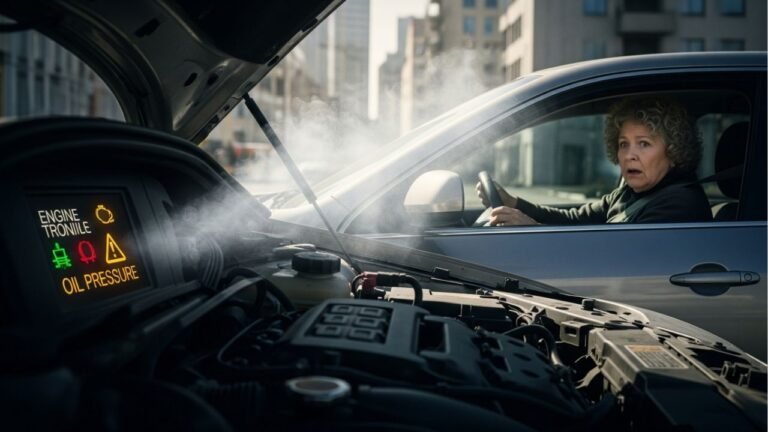Car Oil Low but No Leak? Here’s What Might Be Going On
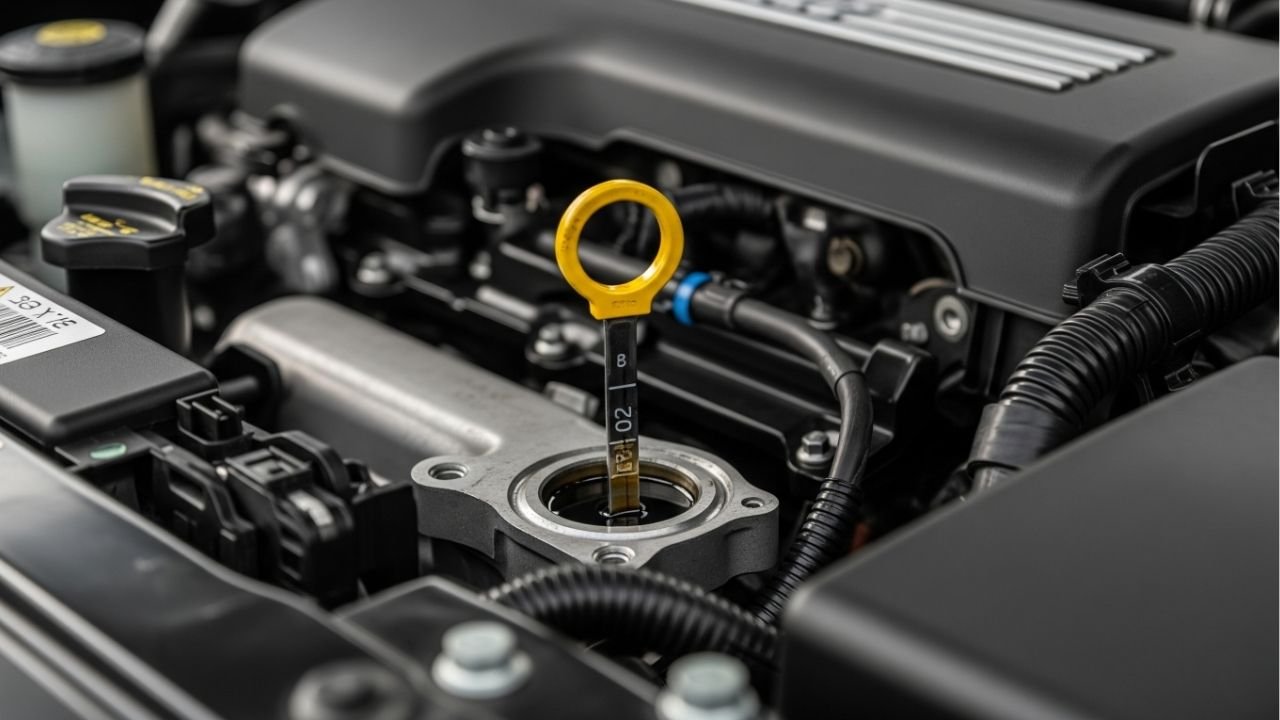
We’ve all been there. You’re doing your routine car check—or maybe the dashboard lights up with that dreaded oil can symbol. You pop the hood, pull out the dipstick, and… surprise! The car oil is low but there’s no leak. No puddle in the driveway. No oily stains on the garage floor. Just mystery. Like your engine has been quietly sipping oil without telling you.
It feels like your car is keeping secrets.
But don’t worry. You’re not alone. And no, your engine isn’t haunted. There are real, explainable reasons for this frustrating issue, and today we’ll talk about all of them.
This guide will walk you through:
-
What it means when car oil is low but no leak is found
-
How internal engine oil loss happens silently
-
The most common culprits behind oil disappearance
-
What to do if you’re facing this issue
-
Preventive tips to stop it from happening again
Let’s crack this mystery open together, like old friends figuring out a puzzle over coffee.
What Does “Car Oil Low But No Leak” Really Mean?
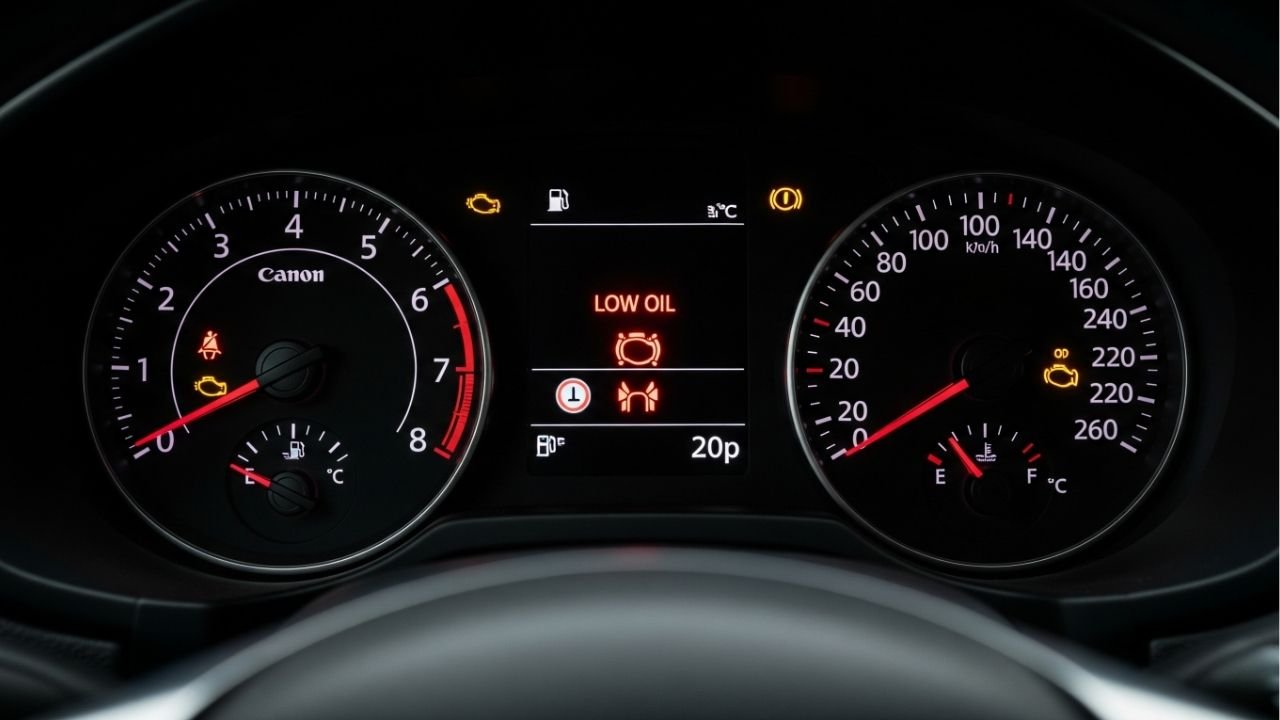
The same goes for your engine. Oil can vanish without dripping onto your driveway.
Low oil without a leak often means the oil is either:
-
Burning internally
-
Being consumed slowly
-
Evaporating in extreme heat
-
Or being pushed out through a failing component under pressure
This isn’t normal, but it’s not necessarily catastrophic. It’s a warning sign, and your engine is asking for help in its own way.
Is It Normal for a Car to Burn Oil?
Short answer? Yes and no.
Some engines—especially older ones or high-mileage vehicles—naturally consume a bit of oil over time. In fact, many manufacturers state that burning up to a quart of oil every 1,000 miles can be considered “within spec.” (Yes, it sounds like a lot, but that’s just how some engines work.)
However, when oil levels start dropping faster than usual, and there’s no leak, it’s usually due to one of the following sneaky culprits.
Common Causes of Oil Disappearance Without Leaks
Let’s look at the main reasons why your car oil is low but no leak is visible:
1. Worn Piston Rings
Think of piston rings as the gatekeepers between the combustion chamber and the crankcase. If they’re worn out, they let oil sneak into the chamber and burn along with fuel.
-
Common in older engines
-
Causes blue smoke from exhaust (but not always)
-
Usually gradual and easy to miss
2. Valve Seal Issues
Valve seals stop oil from dripping into the cylinders. If they’re cracked or brittle, oil can seep past and burn up.
-
Can happen in both older and modern engines
-
Often worsens during long idles
-
May smell like burnt oil but with no visible leak
3. PCV Valve Malfunction
The Positive Crankcase Ventilation (PCV) valve controls pressure inside the engine. If it’s clogged or stuck open, oil vapor gets sucked into the intake and burned off silently.
-
Very common in small engines
-
Easy and cheap to fix
-
Often overlooked but very effective at causing mystery oil loss
4. Turbochargers (for Turbo Engines)
Turbos spin at insanely high speeds and are oil-cooled. Worn seals can let oil sneak into the intake or exhaust side and burn away.
-
Happens with performance cars and diesels
-
May cause smoky startups
-
Usually no puddles or smells—just disappearing oil
Oil Is Low, But the Engine Runs Fine – Should I Worry?
This is where intuition kicks in.
If your engine is running fine but the oil keeps dropping, something small may be silently building into something big.
Engines are resilient, but they don’t forgive long-term neglect. You may not notice the problem now, but internal damage can sneak up, especially if you’re topping off oil frequently without finding the root cause.
Let’s be honest. Oil is the lifeblood of your engine. If it keeps going missing, you’re shortening your car’s lifespan—just like a human body trying to run without enough blood.
How to Know Your Engine is Burning Oil (Even Without Smoke)
Sometimes your car doesn’t leave smoke signals. But it does leave clues.
Here’s how to tell if oil is burning invisibly:
| Sign | What It Means |
|---|---|
| Frequent need to top off oil | Internal consumption likely |
| Engine smells hot or burnt | Oil may be cooking inside |
| Spark plugs look oily or black | Oil entering combustion chamber |
| Exhaust tips are dark or greasy | Residue from burnt oil |
| Decrease in engine performance | Oil buildup affecting components |
Keep an eye on these. If multiple signs show up, don’t ignore them—even if the engine sounds fine.
Real-Life Story: My Car Was Drinking Oil in Silence
Let me take you back a few years. I had a well-loved Toyota Camry. Faithful, smooth, and never gave me trouble—until I started noticing the dipstick was dry every 1,000 miles. I checked under the car every morning. No leaks. Garage floor? Spotless.
Turns out, the valve seals were shot, and oil was slowly slipping into the cylinders. No smoke. No warning light. Just that quiet hunger for oil.
It took me weeks and two trips to the mechanic to figure it out. Lesson learned: Don’t wait for dramatic signs. Trust the little ones.
How to Fix “Car Oil Low But No Leak”
Here’s what you can do if you’re stuck in this oily mystery:
✅ Step 1: Inspect Regularly
Check the oil every 500 miles. Track how much it drops. Use the same dipstick method each time.
✅ Step 2: Look Under the Hood
Shine a flashlight around the valve cover, oil pan, and engine block. Sometimes tiny leaks evaporate before they hit the ground.
✅ Step 3: Replace the PCV Valve
It’s cheap and often the hidden villain. If your engine is burning oil, a bad PCV valve is one of the easiest fixes.
✅ Step 4: Do a Compression Test
Mechanics can test cylinder pressure. Low compression may point to worn piston rings or valve seal problems.
✅ Step 5: Use High-Mileage Oil
These oils have seal conditioners. They might slow down internal oil loss in older engines.
✅ Step 6: Check Your Driving Style
Hard acceleration, high speeds, and frequent short trips can make your engine consume more oil.
Should You Keep Driving If Oil Is Low But No Leak?
Only if you check and top off oil regularly. Otherwise, you’re driving with a ticking time bomb.
When your oil runs too low, your engine runs hotter, friction increases, and metal parts grind together. That’s how engines die young. And trust me—you don’t want to pay for an engine rebuild.
Preventive care beats expensive repair. Every time.
Advanced Diagnostics: How Mechanics Solve the Mystery
If topping off oil and replacing the PCV valve doesn’t solve it, it’s time to go a bit deeper. Let’s look at the tools mechanics use to figure out why oil is disappearing:
Compression and Leak-Down Tests
These tests help detect worn piston rings, valves, and gaskets. Low compression means the engine isn’t sealing properly—one of the top causes of oil burn.
-
Compression Test: Measures how well each cylinder holds pressure.
-
Leak-Down Test: Pinpoints exactly where the pressure is escaping.
If your car is older or has 100,000+ miles, ask your mechanic to run both.
Borescope Inspection
A tiny camera is fed into your engine through the spark plug hole. Mechanics look for oil buildup, scoring, or residue on pistons and cylinder walls. It’s a clear window into what’s going on inside without tearing the engine apart.
Oil Analysis
Send a small sample of your engine oil to a lab. They’ll test for fuel, coolant, and metal shavings. High metal means internal wear. It’s like a blood test for your car—telling you what’s happening before visible symptoms appear.
Long-Term Fixes: How to Stop the Oil Loss
Let’s face it—once you know your car is losing oil with no leak, you need a plan. Not just to refill, but to fix.
Here’s what you can do:
1. Repair Valve Seals or Piston Rings
This is the most expensive solution, but it permanently solves the issue. You’ll need a trusted mechanic. For older cars, this might cost more than the car is worth—so weigh your options.
2. Try Oil Additives
Some additives can help thicken oil slightly, reduce burning, or condition seals. Use this as a temporary solution—not a magic fix.
3. Upgrade to Synthetic High-Mileage Oil
It resists burning better and contains agents to rejuvenate aging seals. It also handles extreme engine temperatures more efficiently.
4. Avoid Aggressive Driving
Redlining, constant acceleration, or towing heavy loads all increase oil consumption. Think of it like sprinting on an empty stomach—it burns through energy (or oil) faster.
5. Consider an Engine Rebuild (If Worth It)
This is your last resort—but for classic or performance vehicles, a rebuild can breathe new life into your engine.
Table: Quick Fix vs. Long-Term Solution
| Solution | Type | Cost Estimate | Effectiveness |
|---|---|---|---|
| Add oil regularly | Short-term | $5–$10/quart | ⚪⚪⚪ |
| PCV valve replacement | Mid-term | $20–$100 | ⚪⚪ |
| Valve seal/piston repair | Long-term | $500–$2500 | |
| High-mileage oil | Mid-term | $40–$70 | ⚪⚪ |
| Engine rebuild | Long-term | $2000–$5000 |
Why Does This Happen More in Modern Engines?
Believe it or not, modern engines are more prone to silent oil consumption than older ones. Why?
-
Tighter engine tolerances to improve fuel economy
-
Smaller turbocharged engines that run hotter
-
Low-tension piston rings designed to reduce friction (but let oil slip by)
-
Longer oil change intervals, leading to oil thinning over time
It’s a trade-off. Better mileage, fewer emissions… but sometimes more oil headaches.
FAQs
1. Is it dangerous if car oil is low but there’s no leak?
Yes. Even without a leak, low oil can mean internal damage or early signs of wear. Over time, it can lead to engine failure.
2. Can I just top off the oil and ignore the issue?
You can top it off temporarily, but it’s not a long-term fix. You’re just buying time—not solving the problem.
3. Why is there no oil puddle but my dipstick reads low?
Oil can burn off inside the engine due to worn seals, rings, or a faulty PCV valve. These don’t cause leaks, but they do cause gradual oil loss.
4. Will thicker oil help stop oil burning?
Sometimes. Thicker oil can reduce the rate of burning in older engines, but it can also affect fuel economy or cold starts. Use only if your manufacturer allows it.
5. Can a bad head gasket cause oil to disappear?
Yes. A failing head gasket can allow oil to mix with coolant or enter the combustion chamber—especially if the engine overheats.
6. Why don’t I see blue smoke if the oil is burning?
If the oil is burning slowly and efficiently, there may not be visible smoke. The catalytic converter may also filter it out before it exits the exhaust.
7. How much oil loss is “normal”?
Some manufacturers say up to 1 quart every 1,000–1,500 miles is acceptable. But sudden increases in oil loss are always a red flag.
8. What’s the worst that can happen if I ignore this?
Engine seizure. When oil runs too low, parts overheat, warp, and fail. You could blow the engine—leading to repairs that cost more than the car itself.
Personal Advice: Be Proactive, Not Reactive
I’ve been around cars my whole life. If there’s one truth I’ve learned, it’s this: Engines whisper before they scream.
Don’t wait for smoke, breakdowns, or warning lights. If your car oil is low but no leak is present, your engine is talking. Listen to it. Respect it.
Because when we take care of our machines, they take care of us.
Final Thoughts: Trust Your Gut and Your Dipstick
We often think problems need to be loud and obvious. But with cars, some of the most damaging issues happen in silence.
If your car oil is low but no leak is visible:
-
Check regularly
-
Don’t ignore the signs
-
Fix the small things before they become big
Engines are like relationships. They need attention, honesty, and a little bit of effort every now and then.
So next time your dipstick reads dry, don’t panic—respond with curiosity. Get under the hood, ask questions, and take care of your car like it takes care of you.


